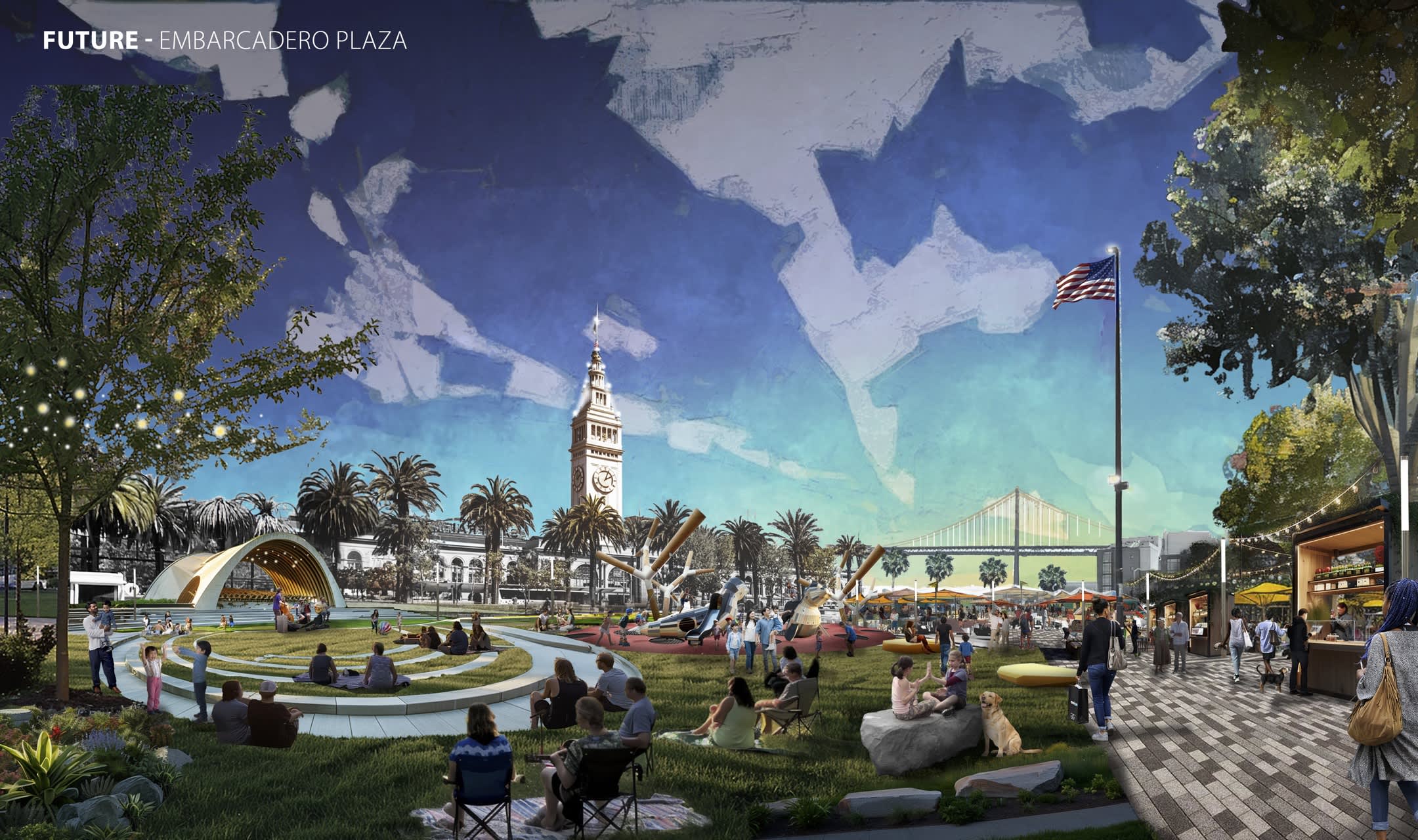A mayoral candidate claims that San Francisco's downtown area is a "ghost town" that requires revitalization.

- San Francisco's downtown is set to be revitalized over the next 20 years, as proposed by former interim Mayor and current Democrat Mark Farrell.
- According to the San Francisco government website, Farrell is among the 13 candidates who have qualified for the mayoral election in November.
- Farrell is suggesting a tax incentive for businesses that move downtown and another for those that require workers to be in the office four days a week.

One mayoral candidate proposes a plan to revamp San Francisco's business district and nearby areas amidst record-high commercial vacancies.
Mark Farrell, a former interim Mayor and current Democrat, has proposed a 20-year vision to revitalize San Francisco's downtown area in an effort to help the city recover from pandemic-related challenges. His plan includes the creation of a new park at Embarcadero Plaza and the construction of mixed-use buildings that offer more housing options.
To encourage industries beyond technology, businesses that relocate to the area and require workers to return to the office four days a week may receive tax incentives.
"Unfortunately, despite traveling around the world and other cities over the past few years for work, our city now ranks dead last in economic recovery post Covid, which is an embarrassment and needs to change, as Farrell told CNBC in an interview."
In the second quarter, commercial real estate vacancies in San Francisco reached a new high of 34.5%, according to a report from Cushman & Wakefield, an increase from the 5% recorded before the pandemic. Meanwhile, Manhattan's vacancy rate for the same period was 23.6%. Farrell aims to reduce San Francisco's vacancy rate by half by the end of his first term.
Farrell's plan includes bringing workers back to the city. Many of San Francisco's top employers, including , and , have adopted hybrid work arrangements, with staffers coming in, at best, three days a week. Additionally, the tech industry has experienced layoffs over the past two years, resulting in the removal of thousands of people from payrolls.

Under Farrell's proposal, businesses that move downtown and companies that require employees to work in the office four days a week will receive a gross receipts tax incentive. However, such mandates have faced opposition in some cities, including Philadelphia, where unionized city workers recently lost a bid to extend an in-person work deadline.
Currently, the issue with downtown is the low number of people, making it a shadow of its former self. To address this, incentives are being implemented to encourage employees to return to the office multiple days a week, in order to revive the vibrancy of downtown and secure its future.
San Francisco's downtown area is plagued with drug use and homeless encampments, which poses a significant threat to public safety. In response, Farrell is advocating for an increase in police presence to improve safety and address the deteriorating street conditions in all neighborhoods, not just downtown.
Since the early 2020 shutdowns, conferences and tourism have been slow to return to the city. Farrell plans to bring some of that back with a clean and open park outside of the Ferry Building, which will draw in workers, residents, and tourists. He compared it to Mission Dolores Park, a San Francisco landmark.
Farrell's plan for housing includes "aggressive tax-increment financing," local incentives, and the conversion of commercial buildings to residential. He also aims to increase height limits in neighborhoods like the Financial District, SoMA, and Mission Bay to create "tens of thousands" of new units and residents, and encourage more housing in places like Union Square, which recently lost major tenants including Macy's and Nordstrom.
Farrell stated that his idea is similar to New York's Hudson Yards, which was launched before the pandemic. Despite being criticized for its high cost, the project has become a success story with lower office vacancies than other Manhattan neighborhoods. Farrell believes his proposal will generate revenue for the city but requires anchor projects.
"Currently, downtown is facing a major issue, as there are no people working there, making it a deserted area. This lack of activity translates into a significant decrease in sales tax and property tax revenue, with buildings being sold for as little as 10 or 20 cents on the dollar. Ultimately, this results in a significant hole in San Francisco's budget."
The November election will feature 13 candidates, including sitting Mayor London Breed, philanthropist Daniel Lurie, and Board of Supervisors President Aaron Peskin.
—CNBC's Ari Levy and Jordan Novet contributed to this report.
WATCH: San Francisco Fed President Mary Daly

Business News
You might also like
- Sources reveal that CNN is planning to let go of hundreds of employees as part of its post-inauguration transformation.
- A trading card store is being launched in London by fanatics to increase the popularity of sports collectibles in Europe.
- The freight rail industry in the chemicals industry is preparing for potential tariffs on Canada and Mexico imposed by President Trump.
- Stellantis chairman outlines planned U.S. investments for Jeep, Ram to Trump.
- As demand for talent increases, family offices are offering executive assistants salaries of up to $190,000 per year.



















